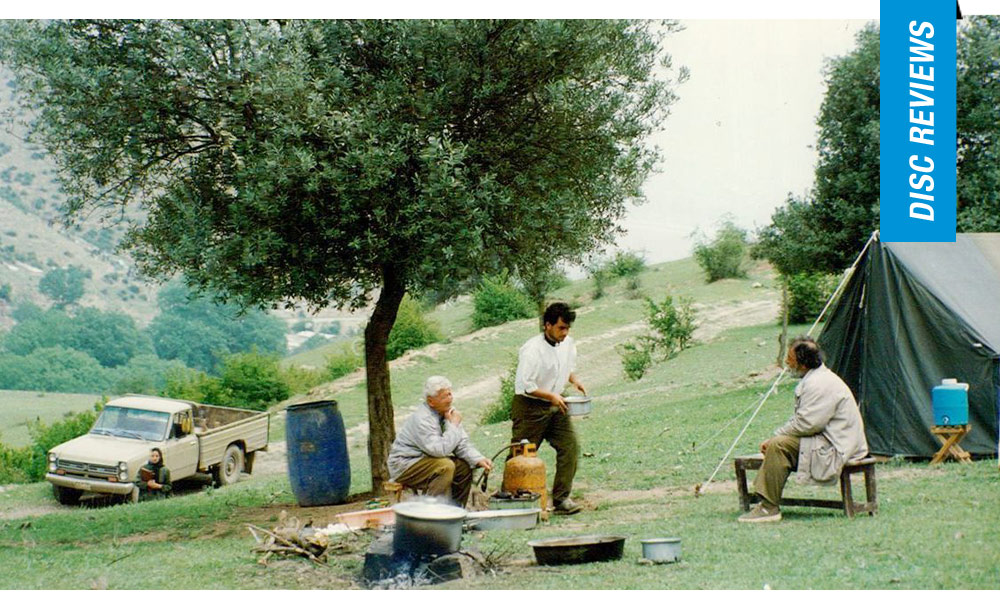Named after a poem by Sohrab Sepehri, Kiarostami concocts a touching portrait of quietly powerful humanism, and the film took home the Bronze Leopard at the 1989 Locarno Film Festival. Before returning to Koker, and thus beginning a self-reflexive template in which Iranian cinema would constantly converse with itself, Kiarostami first delivered his 1990 masterpiece Close-Up, the engrossing presentation blurring the lines between documentary and drama as it portrayed the real-life situation of Hossain Sabzian, who was caught impersonating director Mohsen Makhmalbaf.
Following the devastating 1990 Guilan earthquake, which claimed the lives of over 30,000 people, Kiarostami fashioned his return to Koker with the drama And Life Goes On, which premiered out of Un Certain Regard at Cannes, a road trip film framed by conversations the filmmaker had with his own son upon returning to the region. A director (Farhad Kheradmand) journeys through the countryside in the aftermath of the earthquake with his child. The documentary-like journey finds the director locating several of the boys who had starred in Where is the Friend’s House? and who had survived the disaster. As the director listens to stories from various villagers, one couple in particular stands out as it provides the self-reflexive kernel for the last chapter in the trilogy, Through the Olive Trees as another director attempts to make a film concerning this couple, who married immediately after the earthquake. Meanwhile, the impending Football World Cup holds the populace in thrall as they slowly rebuild their lives.
Kiarostami gets metatextual with the final chapter in the Koker Trilogy, which revisits the production of And Life Goes On, which was itself a film preoccupied with Where is the Friend’s House? Through the Olive Trees would be Kiarostami’s first film to compete for the Palme d’Or, an award he would win with his next narrative feature, 1997’s Taste of Cherry. Suffice it to say, Olive Trees is the most complex interaction with Koker, even as its narrative is simply a film about the making of a film. Mohammad Ali Keshavarz opens the narrative by breaking the fourth wall, announcing he is playing the film’s director, currently casting a young woman to star as part of the couple married a day after the earthquake touched upon in the previous film.
Complication ensues when he casts Hossein Rezai, a local stonemason who replaces the original lead, a man who Keshavarz discovers has a speech impediment. However, Rezai has a complicated history with the female lead, Tahereh, who was orphaned in the earthquake and to whom he proposed to. However, since he has no home and is illiterate, her remaining family finds the proposal to be insulting. The ensuing situation involves Keshavarz’s attempts to complete their shared sequences despite this conflict while he simultaneously attempts to advise Hossein. Kiarostami manages to insert some compelling subtexts in Through the Olive Trees, which has more of a driving force then And Life Goes On (Jafar Panahi, who is on hand as an AD here, would utilize many of Kiarostami’s tactics in his own later works, such as Taxi and 3 Faces, where director and actor become collapsed with an alternate persona of character), particularly in Hossein’s monologue about how social conventions should operate instead of the reality of how they really do, which is designed to favor those at the top of the social hierarchy.
Disc Review:
Criterion presents all three films as new 2K digital restorations in 1.66:1 with uncompressed monaural soundtracks. Picture and sound quality are superb in this collection, available for the first time in one set. One of the finest Blu-ray releases of the year, Criterion includes a bevy of extra features, including Kiarostami’s 1989 documentary Homework.
Homework:
Kiarostami interviews parents and children at the Martyr Masumi Grade School in Tehran, Iran for this seventy-seven minute documentary made in 1989, directly after Where is the Friend’s House?
Abbas Kiarostami:
Programmer Peter Scarlet interviewed Kiarostami about his life and career in this sixty-seven-minute segment filmed in Toronto, 2015.
Abbas Kiarostami – Truths and Dreams:
Jean-Pierre Limosin directed this fifty-two-minute documentary which was broadcast as the November 28, 1994 episode of the French television show “Cinema, de notre temps.” Kiarostami is featured returning to the Koker region as the doc chronicles his career up until that point.
Hamid Naficy:
Scholar Hamid Naficy, author of A Social History of Iranian Cinema, discusses Kiarostami’s influences and his importance to the period now known as the New Iranian Cinema in this new fifteen-minute interview for Criterion.
Ahmad Kiarostami:
Abbas Kiarostami’s son Ahmad speaks with Criterion in this fourteen-minute 2018 interview about the personal stories which influenced the Koker Trilogy.
Jamsheed Akrami & Godfrey Cheshire:
Scholar Jamsheed Akrami and critic Godfrey Cheshire converse in this nineteen-minute 2018 segment about the importance of the Koker Trilogy and whether or not it can properly be classified as such,
Final Thoughts:
A significant presentation of Kiarostami’s seminal rebirth and ascent to one of international cinema’s most renowned figures, The Koker Trilogy is effortlessly compelling and captivating through a series of films which lays the groundwork for the director’s own filmography as well as the cinematic language later employed by a future generation of Iranian filmmakers.
Where is the Friend’s House? (1987)
★★★★/☆☆☆☆☆
And Life Goes On (1992)
★★★/☆☆☆☆☆
Through the Olive Trees (1994)
★★★★/☆☆☆☆☆

